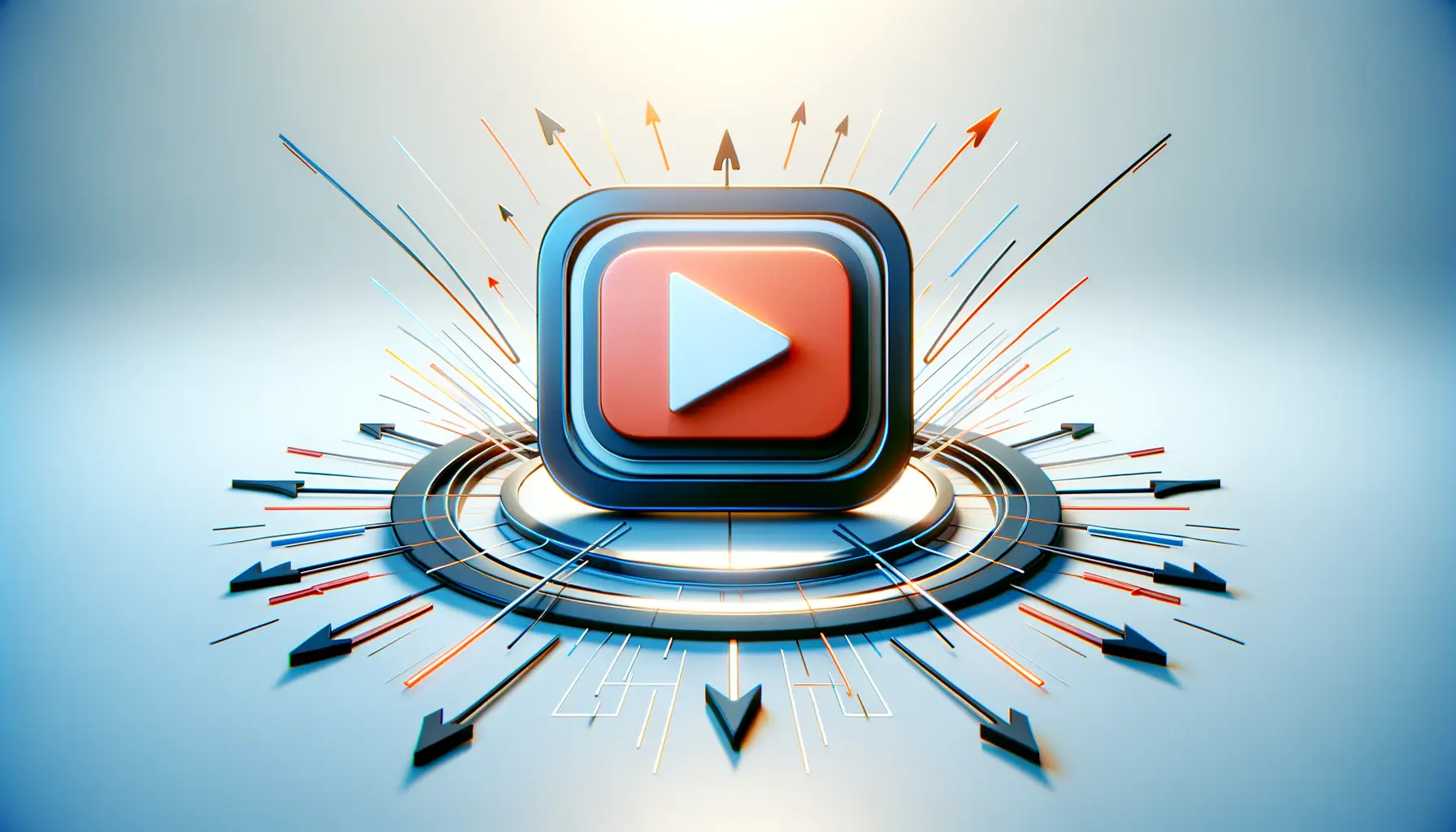Video And A - Making Your Visual Content Shine
Sometimes, you just want your online visual experiences to work without a hitch, and it's almost a given that we all expect things to load quickly and play smoothly. We often find ourselves trying to enjoy a film or a short clip, only to have it pause or buffer, which, you know, can be a bit frustrating. The good news is that there are many simple ways to get your videos playing just right, and there are even more ways to create and share your own amazing visual stories with others, so it's a pretty exciting time for anyone who loves watching or making content.
When you are watching something online, the way your home network is set up can really change how well things play. Having many devices all trying to use the internet at the same moment can, in a way, slow down the connection for each individual gadget, making your video experience less than perfect. Luckily, there are simple adjustments you can make to help keep your viewing clear and steady, like picking a different picture setting for your content, which is actually quite helpful.
Beyond just watching, the tools and places we use to create and share visual material have grown so much, offering so many possibilities. From making your own clips with just a few words, to finding free content for a project, or even just sharing your favorite moments with friends, the ways we interact with moving pictures are always getting better. It's really about making it easy for anyone to get involved, whether they are a viewer or a creator, and discover what's out there, or show off what they have made, which is pretty neat.
Table of Contents
- How Does Network Activity Affect Your Video & A Viewing?
- What Are the Secrets to Creating Great Video & A Content?
- Where Can You Find and Share Amazing Video & A Experiences?
- Can Video & A Tools Truly Simplify Your Workflow?
How Does Network Activity Affect Your Video & A Viewing?
It's a common thing, you know, when you have a bunch of gadgets all hooked up to the same internet connection, it can sometimes make things a bit slower for each one. Think of it like a single road, and suddenly everyone decides to drive on it at the same time; traffic gets heavy. This can mean that the picture you are trying to watch might not be as clear, or it might stop and start, which is a little annoying when you are really into something. So, if you are experiencing hiccups with your online visual content, it could very well be that your network is just a little busy with everything else going on.
For instance, if someone else in your home is downloading a really big file, or maybe playing an online game that uses a lot of internet, your own movie watching might take a hit. This shared connection means that the available speed gets spread out, and that's why your particular device might not get all the quickness it needs to play things perfectly. It's just how these shared systems tend to work, more or less, and it's something many people run into without even realizing why their favorite shows are buffering.
To help with this, you can, of course, try a few simple things. One really straightforward way to get a better visual experience is to change the quality setting of the picture you are watching. If you set it to a lower quality, the amount of information your device needs to pull from the internet goes down, and that can make a pretty big difference. It's like asking for a smaller package instead of a giant one, which is easier for the delivery service to handle quickly. So, if your picture is choppy, just a little adjustment to the quality might be all you need to smooth things out, which is pretty handy.
Keeping Your Video & A Stream Smooth
When it comes to keeping your visual material playing nicely, especially with "video&a" content, thinking about how your internet connection handles everything is pretty key. As we touched on, a crowded network can make your viewing less than ideal. But there are other aspects to consider beyond just the sheer number of devices. Sometimes, the way the content itself is handled on the back end can also play a role in how well it comes through to your screen, which is interesting to think about.
For example, there's work being done with something called "video depth anything" that builds on an older version. This new approach can be used for really long pieces of visual material, and the idea is that it won't lose its good looks or act inconsistently, no matter how extended the viewing. This means that if you're watching a feature-length film or a lengthy documentary, the quality should stay the same from beginning to end, which is a definite plus for anyone who enjoys long-form "video&a" content. It's about making sure the experience holds up over time.
In the past, there was a temporary, simpler version of a system called "Teacache," which was for turning images into videos. Now, with the newer version, the settings for certain values need to be much higher – about ten times what they used to be. This change is pretty important for making sure the new system works as intended, and it shows how these behind-the-scenes technologies are always getting updated and improved. It's all about making the process of creating and showing "video&a" content more effective and polished, which is good for everyone involved, you know.
What Are the Secrets to Creating Great Video & A Content?
Making visual content that really grabs people's attention often feels like a bit of a mystery, but honestly, it comes down to a few straightforward ideas and the right tools. It's not just about pointing a camera and hitting record; it's about telling a story, or sharing information in a way that truly connects with your viewers. Think about what you want people to feel or learn, and then consider how the moving pictures can help you achieve that. This approach, you know, makes a big difference in how your creations are received by others, and it's really the heart of good content.
One of the more interesting advancements is how quickly you can now make new visual pieces. There are systems that can put together thirty frames per second at a good picture size, and they do it faster than it takes for you to actually watch the finished product. This speed means that creators can experiment more, or produce more content in less time, which is a huge benefit for anyone trying to get their ideas out there. It really changes the pace of how things can be made, so that's pretty cool for anyone involved in making visual things.
When you're putting your own visual pieces together, there are some simple steps to follow. To change something in a clip you've made, you just click on the "edit prompt" option. If you want to add that clip to your larger project, you simply move your mouse over the finished clip, and that action places it onto your main work area. These straightforward actions make the creative process much more approachable, even for people who are just starting out with making their own "video&a" creations, which is quite helpful, honestly.
Making Your Video & A Projects Come Alive
Bringing your "video&a" projects to life often involves more than just capturing images; it's about adding layers of sound, words, and clever transitions. These elements truly help shape the story you are trying to tell and make your content more appealing to watch. For example, if you are making a short film, the music you choose can set the whole mood, and the way one scene flows into the next can keep people glued to their screens, which is really what you want.
There are now tools that let you create visual content just by giving them simple text instructions. These generators can help you write the actual words for your piece, put together different clips, add words on the screen for people to read, include background music, and even manage how one scene blends into another. It’s like having a whole production team at your fingertips, making it much easier to craft a complete and polished "video&a" piece, which is pretty amazing, if you think about it.
Beyond just making new content, sometimes you need to work with what you already have. For instance, if you have an audio recording, you can upload it and get it turned into written words in just moments. This is super helpful for making your content more accessible, or for creating scripts from spoken word. The same goes for converting sound files, like MP3s, into text using smart transcription systems that can do it instantly and in many different languages. This kind of conversion makes working with "video&a" elements much more flexible and efficient, honestly.
When it comes to sharing your "video&a" with others, sometimes you might use little descriptive words or "tags." These can be useful if the main subject of your visual piece is often spelled incorrectly by people searching online. However, for the most part, these little tags don't really play a huge part in whether your visual piece gets found by a lot of people. What truly helps your content get noticed is usually the quality of the content itself and how engaging it is, which is, you know, what most people really care about when they are looking for something to watch.
Where Can You Find and Share Amazing Video & A Experiences?
The internet is just full of places where you can find all sorts of interesting visual material, and it's pretty wonderful how much is available for free. You can look through online visual collections to discover films, short clips, factual programs, and much more, all shown in really clear, high-definition quality. Whether you are in the mood for something funny, a serious documentary, an animated story, or a dramatic tale, there are collections that highlight what their staff think are the best pieces, and that's a great way to find new things to watch, honestly.
When you want to share your own visual creations, there are plenty of spots online where you can do just that. You can easily share your personal visual stories with your close ones, your wider circle of friends, and even with people all over the world. It’s a simple way to connect through moving pictures, and it really lets your work be seen by a broad audience, which is pretty neat. This ability to put your content out there for anyone to see has made sharing "video&a" a very common activity.
Certain big companies also offer their own ways to watch visual content. For instance, there's a popular streaming service that comes from a very large online store. The benefits of this service are usually part of a wider membership package from that store. So, if you are already a member, you likely have access to a whole library of exclusive original shows, as well as many popular films and television programs. This makes it really convenient to find a lot of different "video&a" content all in one place, which is something many people appreciate.
If you're looking for free visual material to use for your own website, a promotional clip, or any other project, there are places that make it very easy to get what you need. These sources provide free visual content for both personal use and for business purposes, which is a really helpful resource for creators. It means you don't have to worry about paying for basic clips, and you can focus more on putting your "video&a" project together, which is pretty cool.
Exploring the World of Video & A Content
The world of "video&a" content is always changing, and finding what's new or what's really popular can be quite exciting. There are search tools specifically for visual content that help you easily discover and watch the most recent clips. These tools let you explore what's currently trending, what's gone widely popular, and even find your favorite creators across many different online platforms. It's a bit like having a guide to all the interesting things happening in the visual online space, so that's pretty useful.
For those who enjoy watching what everyone else is talking about, there's a central spot that shows the heartbeat of what's popular on a very well-known video sharing site. You can check out the newest music clips, previews for upcoming films, funny short pieces, and just about everything else that people are watching at that very moment. It's a simple way to stay connected to what's current and see what's making waves in the world of "video&a," which is quite fun, honestly.
Sometimes, you might find yourself wanting something different from the usual places you watch visual content. If you're looking for other spots to watch things, there are many good choices out there besides the most famous ones. These alternatives can offer different kinds of content, or a different viewing experience, which might be just what you're looking for if you want to broaden your "video&a" horizons. It's always good to have options, you know, and there are plenty of them.
There are also some really specific types of "video&a" content that serve unique purposes. For example, there are educational clips, like a song about the letter "A" from a company that focuses on teaching. These kinds of visual pieces are a wonderful way to learn new things in a fun and engaging way, especially for younger viewers. It shows how versatile visual content can be, going beyond just entertainment to help with learning, which is a really positive use of the medium.
Can Video & A Tools Truly Simplify Your Workflow?
Working with visual material, whether you're making it or just changing it around, can sometimes feel a bit complicated, but honestly, many tools out there are designed to make the whole process much simpler. The idea is to take tasks that might seem a little daunting and break them down into easy steps, so that anyone can get involved. This means you don't need to be a technical expert to create something impressive or to adjust a clip to fit your needs, which is pretty great, you know.
One very useful type of tool helps you change the format of your visual pieces. There are free online converters that can take a visual file and turn it into many different kinds of formats, like ones for mobile devices or for sharing on the internet. These converters support a very large number of different visual formats, making it easy to get your content ready for whatever platform you need. This flexibility is a huge time-saver and makes working with "video&a" much less of a headache, honestly.
Another neat trick is being able to turn your visual clips into short, moving pictures that repeat themselves, often called animated GIFs. There are tools that are really easy to use for this purpose, letting you quickly change your longer visual pieces into these smaller, shareable animations. These are perfect for sending to friends or for putting on websites, as they load quickly and convey a lot of feeling in a short burst. It's a simple way to make your "video&a" content more fun and shareable, which is quite popular these days.
And then there's the opposite side of the coin: taking your visual content and just getting the sound from it. There are ways to change your visual pieces into audio files, like MP3s, in the very best sound quality. The process is straightforward: you just click a button to pick your visual file, and then the tool does the rest. This is super helpful

10 Great Library Marketing Videos | Q&A: Two-Way Text Messaging Software

Youtube'da Video ile Marka Bilinirliğini Artırma (2024)

YouTube Performance Study: Selecting the Right Video Content for Your